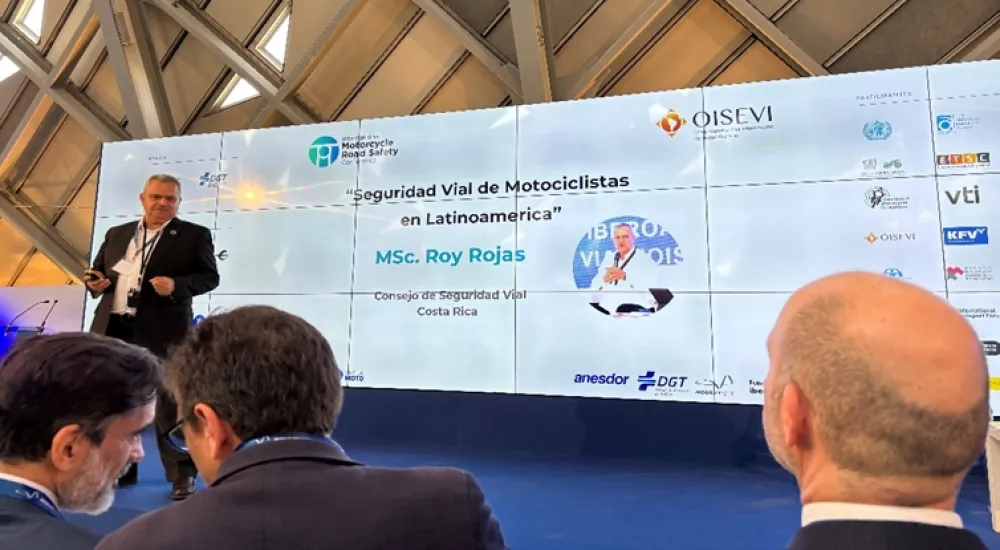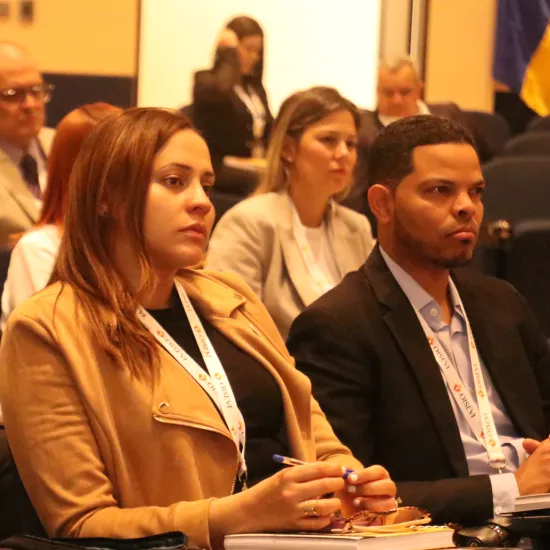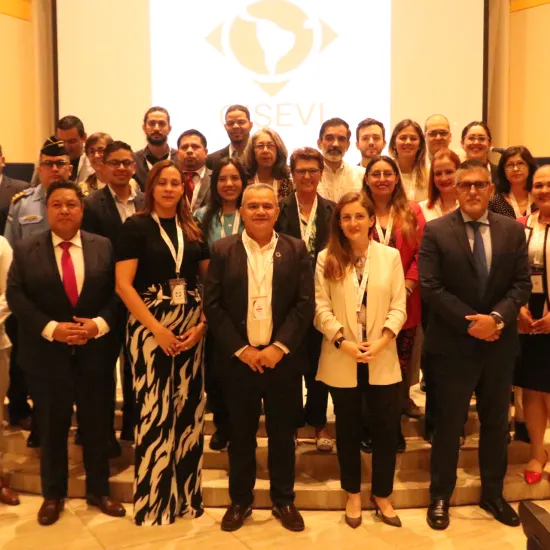OISEVI participates in the I International Road Safety Conference of the Motorcycle
Roy Rojas presented at the 1st International Conference on Motorcycle Road Safety, held in Zaragoza on March 20 and 21, 2024, the paper entitled 'Motorcycle Road Safety in Latin America'.
At the beginning of his presentation, he made an analysis of the mobility phenomenon in Latin America, emphasizing the role that the very design of cities plays in road safety and the fact that, in the region, 80% of the population lives in small and medium-sized cities. According to Rojas, in previous decades urban planning has been focused on automobile mobility and there are cases of deaths and serious injuries among the group of motorcycle users due to leaving the road because this type of user was not foreseen at the time.
Throughout his speech, he presented data on the motorization rate in the region and the increase in the number of motorcyclists killed since 2009. Rojas pointed out that the Dominican Republic has the highest motorcycle mortality rate in the world. In terms of motorization, the rate is growing rapidly: from 2012 to 2020, the total number of registered motorcycles increased by 62% in the Americas.
Despite the lack of clear data on road accidents in the region, according to the WHO Regional Report on the Status of Road Safety, in 2023 motorcyclists accounted for 27% of deaths in road accidents. The motorcycle is the main form of mobility in the entire region, especially for the last mile, family and work uses.
Most deaths occur outside metropolitan areas, which represents a risk given that hospitals are usually far from the areas where the accident occurs and the time it takes to get there can cause death or worsening of injuries. Likewise, young people between 18 and 29 years old are the age group that represents the highest accident rate due to their reckless behavior.
On the other hand, although helmet use is legislated, its enforcement is poor and many users lack adequate training. In addition, most motorcycle trips are for work reasons and users often have little training and difficulty understanding driving manuals.
Given the difficulty of applying external scientific evidence, endogenous evidence focused on the region needs to be developed. The main challenges pointed out by Rojas include improving the training of motorcyclists, ensuring compliance with regulations, improving the technical characteristics of motorcycles, improving urban traffic and the regulation of work on motorcycles, as well as improving infrastructure for the use of motorcyclists.
Finally, a decalogue of commitments was proposed to address the problem of motorcyclist accidents.


